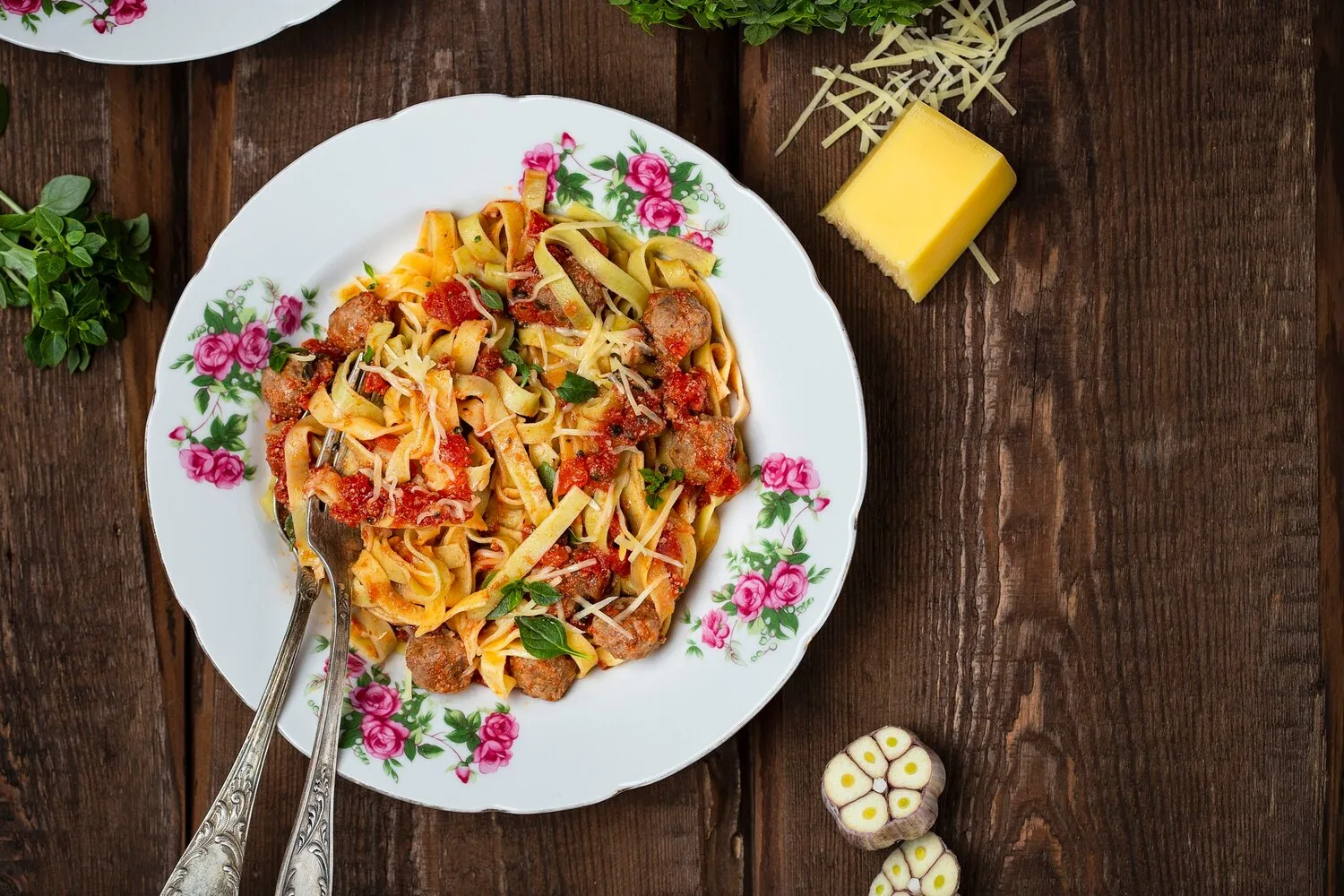
Pasta Dishes
Various house-made pasta dishes are frequently mentioned positively, but without specifying a single 'best' one. Look for specials and seasonal options.
Nutrition Facts
* The % Daily Value (DV) tells you how much a nutrient in a serving of food contributes to a daily diet. 2,000 calories a day is used for general nutrition advice.
Pasta has a long and rich history in Italy, dating back to ancient Roman times with dishes resembling lasagna. Over centuries, different regions developed their own unique pasta shapes and sauces, influenced by local ingredients and culinary traditions. The introduction of the tomato from the Americas in the 16th century revolutionized Italian cuisine and led to the creation of many of the tomato-based pasta sauces we know today. Fresh pasta, made with eggs and flour, became a staple of Italian cuisine, offering a superior texture and flavor compared to dried pasta.
Pasta is deeply ingrained in Italian culture, representing family, tradition, and conviviality. Meals are often centered around pasta, and the act of making fresh pasta together is a cherished family activity.
Family Gatherings
Pasta dishes are a central part of family meals, especially on Sundays and holidays. They are often shared communally, fostering a sense of togetherness.
Regional Variations
Each region of Italy boasts its own unique pasta shapes and sauces, reflecting the local ingredients and culinary traditions. This diversity is a source of pride and identity for each region.
The Art of Sauce Making
Creating the perfect pasta sauce is considered an art form in Italy, with families often passing down secret recipes through generations. The sauce is just as important as the pasta itself.
The Importance of Freshness
Fresh pasta is preferred over dried pasta, as it has a better texture and flavor. Many Italians pride themselves on making fresh pasta at home, using high-quality ingredients.
The flavors of fresh pasta dishes are incredibly diverse, reflecting the regional variations and countless sauce combinations. Generally, fresh pasta offers a more delicate and nuanced flavor than dried pasta, allowing the sauce to shine.
The flavors depend entirely on the chosen sauce and ingredients. For example, a simple aglio e olio (garlic and oil) highlights the freshness of the pasta and the pungent garlic. A rich ragu sauce offers a deep, savory flavor from the slow-cooked meat and tomatoes. Creamy sauces like Alfredo provide a luxurious, buttery taste. Pesto, made with basil, pine nuts, garlic, parmesan, and olive oil, delivers a vibrant, herbaceous flavor. Seafood sauces introduce briny and delicate notes. The type of pasta itself also influences the flavor profile; egg-rich pasta like tagliatelle is richer than a simple semolina pasta like orecchiette. Fresh ingredients like herbs, vegetables, and cheeses significantly contribute to the overall taste.
Salt the Pasta Water Generously
Salting the pasta water is crucial for seasoning the pasta from the inside out. Use a generous amount of salt, enough to make the water taste like the sea.
Cook Pasta al Dente
Cook the pasta al dente, meaning 'to the tooth.' It should be firm and slightly resistant when bitten, not mushy.
Reserve Pasta Water
Before draining the pasta, reserve about a cup of the starchy pasta water. This water can be added to the sauce to help it emulsify and cling to the pasta.
Combine Pasta and Sauce Immediately
Toss the cooked pasta with the sauce immediately after draining, while the pasta is still hot. This allows the pasta to absorb the flavors of the sauce.
Use High-Quality Ingredients
The quality of the ingredients, especially the pasta, sauce components, and olive oil, significantly impacts the flavor of the dish. Choose fresh, high-quality ingredients whenever possible.
Adjust Sauce Consistency
Add reserved pasta water to the sauce as needed to achieve the desired consistency. The sauce should coat the pasta evenly without being too watery or too thick.
Explore additional Italian dishes and restaurants
Explore ItalianDiscover top dining spots and culinary experiences in Livingston.
Explore LivingstonLearn more about the food culture, restaurant scene, and culinary heritage of United States.
Explore United States
